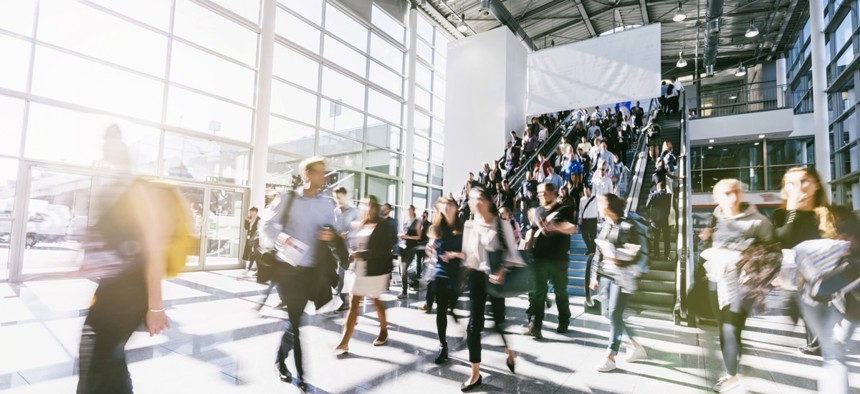Survey: Americans Mostly Unfazed by Facial Recognition Tech

Most people oppose strict regulations on the technology, particularly if they’ll hinder local law enforcement’s ability to catch suspects, a new survey found.
Only 26 percent of Americans think government should strictly limit use of facial recognition technology, according to a new Center for Data Innovation survey.
That number drops to 18 percent if government regulation comes at the expense of public safety. Exactly how governments, particularly law enforcement, should use this new tech has become a growing issue, with civil liberty groups cautioning that it can lead to racial profiling and isn’t sophisticated enough to be used in “real-time” surveillance.
States often implement stricter regulations for new technologies, CDI Director Daniel Castro told Route Fifty, with Illinois and Texas both passing biometrics laws requiring individual consent to collect facial data.
“State governments should not be setting limits on when the technology is used but supporting performance metrics,” Castro said. “For example, making sure law enforcement meets certain accuracy requirements when facial recognition is used.”
In fact, accuracy of facial recognition technology is consumers’ main concern, according to the survey. CDI is affiliated with the tech think tank Information Technology and Innovation Foundation.
Brad Smith, the president of Microsoft, argued in a blog post last month that governments need to start regulating facial recognition technology. A Brookings Institution survey last fall, which like CDI’s survey was conducted online, found that 50 percent of respondents were against stores using the tech to prevent theft.
Almost 40 percent of CDI survey respondents agreed police departments should use the technology to find suspects if the software is correct 80 percent of the time—compared to 32 percent who disagreed. Were the software 100 percent correct, 59 percent of respondents agreed law enforcement should use the tech.

The American Civil Liberties Union warns on its website “the biggest danger is that this technology will be used for general, suspicionless surveillance systems.” Used in combination with public video cameras, the software can operate without knowledge or consent from subjects, and state motor vehicle agencies already possess high-quality photos of most citizens.
In recent years, U.S. Department of Homeland Security officials have talked about making travelers’ faces their passports at airports and implementing curb-to-gate passenger analysis based on opt-in principles. But the ACLU argues identity-based security doesn’t tell analysts anything about the threat a person poses to aviation and therefore this wouldn’t increase safety.
“More broadly, the agency’s vision will not be possible without building a comprehensive face surveillance infrastructure that, once in place, will likely be technologically impossible to opt out of without wearing a mask,” said Jay Stanley, ACLU senior policy analyst, in an October blog.
People are pretty supportive of surveillance cameras because of their familiarity with the technology, and similarly consumers have been introduced to facial recognition tech through smartphones and Facebook photo tagging, Castro said.
“If the government is very clear about the benefits coming from the technology, the population is generally on board with it,” Castro said.
Increasingly state and local jurisdictions are using facial recognition to identify suspects in clear images with some interested in deploying the tech in real time or using it on large crowds during events, where there’s a known threat, or to find missing persons—which remains in the experimental phase.
Providing details on such uses will improve public transparency and buy-in. That requires a solid public education campaign, which not all governments will invest in.
“Some states are probably going to deploy it badly,” Castro said.
Dave Nyczepir is a News Editor at Government Executive’s Route Fifty and is based in Washington, D.C.
NEXT STORY: Open data when government is closed






